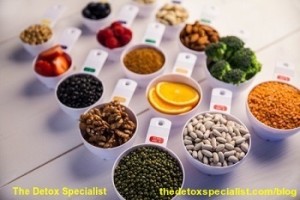 If you have been neglecting bowel cleansing then the predictions for a return to high fiber foods this year can only be good. Fiber is good for your health in so many ways but more of that later.
If you have been neglecting bowel cleansing then the predictions for a return to high fiber foods this year can only be good. Fiber is good for your health in so many ways but more of that later.
Supermarket bosses have said that people are rejecting the soft, basic, white loaves in favor of speciality loaves with added fiber.
That strikes me as strange because if wheat was not refined in the first place they would not have to add back the fiber but it seems many people still prefer white bread to brown.
Please note that I am not advocating eating wheat bread as a way to get your fiber. Far from it!
Wheat contains gluten and, although doctors say that the trend towards a gluten free diet is just a fad and has no basis, a lot of people who avoid gluten are finding their digestive symptoms disappear and their health improves.
Gluten grains are generally avoided on detox diets because gluten is hard to digest and it’s certainly not recommended for bowel cleansing.
Dr Alessio Fasano, tireless researcher into Celiac disease and gluten intolerance, says that no one can fully digest modern wheat which can cause problems for a lot of people.
There are much better ways to get your fiber for cleansing your bowel than from bread.
What exactly is fiber?
Fiber is the part of vegetables, fruits, beans, grains, nuts and seeds that you can’t digest.
There are 2 types of fiber, soluble fiber and insoluble fiber.
Soluble Fiber
Soluble fiber nourishes the good bacteria in the bowel, lowers cholesterol, slows the rate that sugar is released into the blood stream, reduces the level of estrogen in the blood lessening the risk of breast cancer, and binds up heavy metals in the digestive system.
Researchers have said that the daily intake of fiber can cut the risk of breast cancer by a quarter. It’s never to early to start eating fiber. The researchers say that the earlier teenagers start eating more fiber rich foods the more they are protected in the future.
Most important for people who want to lose weight soluble fiber binds with liquids to form a gummy gel that makes you feel fuller for longer so you are not tempted by unhealthy snacks to keep you going between meals.
Where is soluble fiber found?
Soluble fiber is found in foods such as apples, apricots, citrus fruit, Brussels sprouts, carrots, turnips, sweet potatoes, asparagus, oats and beans. Black beans, kidney beans and navy beans are especially high in soluble fiber.
Insoluble fiber
Insoluble fiber lessens the risk of bowel cancer by increasing the bulk of the stool and speeding transit time. This is important for bowel cleansing.
Indirectly, by preventing constipation, the fiber lessens the chance of hemorrhoids, diverticulitis, appendicitis and other conditions of the bowel.
Where is insoluble fiber found?
Insoluble fiber is found in the seeds and skins of plants, in foods such as wheat bran, brown rice, rye, lentils, flax seeds, cabbage, lettuce, onions and bell peppers.
Seeds and nuts have a moderate amount of fiber, most of which is insoluble.





Hey! Its Shefali again!
With such an increase in junk food consumption, bowel toxicity is bound to increase. And what better than fiber for bowel cleansing?
My mom has suffered from constipation and I know the importance of it.
I think you forgot Oats as one of the food rich in fiber along with Rye, wheat and barley!
Hi Shefali,
Yes, you are quite right. A junk food diet will increase bowel toxicity. I don’t think I forgot oats. I did mention oats as one of the sources of soluble fiber but I said that rye, wheat and barley were grains to avoid because of the gluten in them. Oats contain avenin, a protein similar to gluten that many people, even celiacs, can tolerate although they have to get oats that are guaranteed to be gluten free if they are very sensitive as they may still be contaminated with gluten.
Thanks for visiting again.
Good health,
Sandy
Hi Sandy,
Informative post indeed 🙂
I loved the infographic image that helps us understand it all better. Yes, the soluble and insoluble kinds of fibers were what we were taught in school too, and striking a balance between the two is the way it should be, if we can follow that.
Your post reminds me of my Dad, who always ensured we had different colors of fruits and vegetables on our meal plates. Yes, breakfast was always of oats, fruits, juices, or else wheat ‘paranthas’ as we call it here, which are pretty nutritious if you stuff them with vegetables. I’m glad that our country as yet hasn’t got much into fast food, but it’s tough to stop the kids nowadays, unless you don’t inculcate such healthy lifestyle in your house, isn’t it?
Thanks for sharing. Have a nice week ahead 🙂